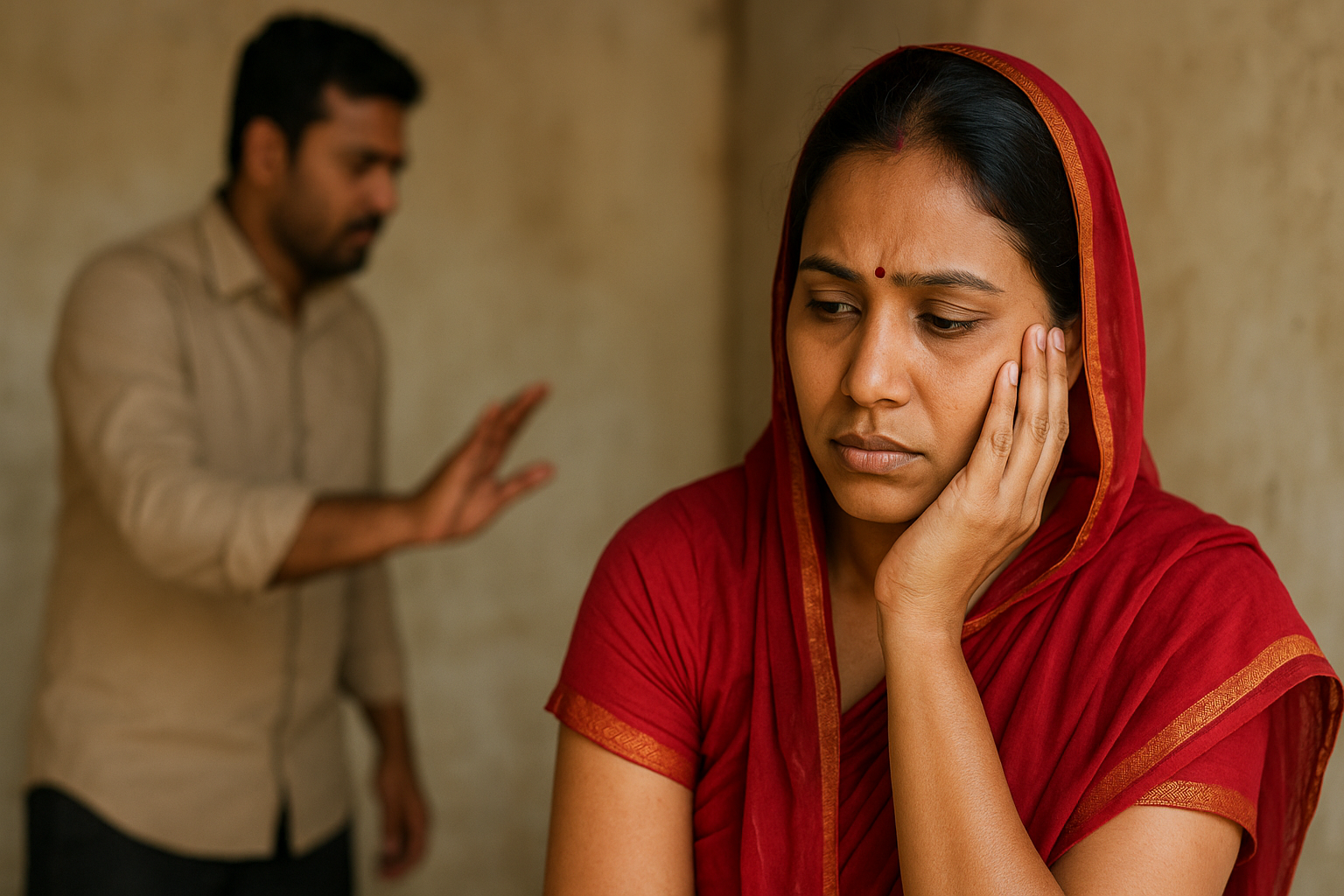Abstract
The most significant reform measure for a Uniform Civil Law applicable to all citizens irrespective of their religion is the Uniform Civil Code. Currently, there are multiple sets of personal laws with regard to marriage, divorce, inheritance, adoption, and so on, which are religion-specific and form a part of the legal framework in India. This plurality often leads to inconsistencies and a feeling of being unequal in the eyes of the law, and it might engender feelings of differences and conflict among communities.
The Uniform Civil Code has the view to integrate these diversified laws into a unique set of regulations which shall be applied to every citizen, thus ensuring equity in treatment and justice, which was earlier denied due to one’s religion. Champions of the UCC state that it would help national integration by having a common legal identity and eradicating the menace of discriminatory treatment. They further believe that a uniform legal framework will ease legal procedures, avoid disputes, and even sustain some basic rights enshrined in the Indian Constitution, such as equality and non-discrimination.
Opponents of the UCC are genuinely concerned about infringements on religious liberty, particularly the complex process of harmonizing diverse cultural and religious practices under a single legal system. They believe that the UCC has the potential to undermine religious communities’ autonomy and destroy traditional practices that are strongly ingrained in their culture. The discussion over a standard civil code can be put within bigger debates going on in Indian society today, such as secularism, equality, and the balance to be struck between protecting individual rights and respecting community tradition. Thus, the question for a Uniform Civil Code remains central to discussions about legal reform and a more equitable and connected India.
Introduction
The Uniform Civil Code (UCC) is being developed in India. It covers marriage, divorce, inheritance, and adoption for all religions. India’s Constitution tells the government to put a uniform civil code in place across the country. But talks about using the UCC never seem to end. Some think it will bring the nation together. Others see it as an attack on religious freedom and cultural diversity. This paper will examine the pros and cons of uniform commercial code. It seeks to go deeper into the diverse cultures of India as manifested in UCC. But it also demonstrates how different cultures can lead to divergent legal outcomes.
The Uniform Civil Code is visualized mechanically as a way of bringing uniformity & equality before the law, whereby all citizens irrespective of their religious beliefs are governed by one set of laws – thereby ensuring that everyone enjoys equal protection while being equally endowed with rights under the Indian Constitution. The proposed law is aimed at addressing legal inequality and discriminations within the present multiplicity of personal laws. The objectives of the Uniform Civil Code are threefold: integration of diversities in religious practices by a harmonized legal framework, improvement of national cohesion, and simplification of legal processes.
The Uniform Civil Code in India is a Much Larger Controversial Issue than the question of whether or not we can introduce a uniform civil code goes to even broader debates including those around secularism, equality before law an preservation cultural diversity. The UCC was always seen as a touchstone position whenever the discourse about legal reform or concerns of integration came up in this country which is struggling with many other issues and challenges.
Background
Uniform Civil Code actually first came into light in India when the country was framing its constitution. The author of Indian Constitution, B.R. Ambedkar considered uniform civil codes as one of the many steps towards social justice and nation building. Ambedkar supported UCC on grounds that it would help in minimizing legal disparities between communities and also lead to nation building.
The basic principle is enshrined in Article 44 of the Constitution. It says that the state shall endeavor to secure for the citizens a uniform civil code throughout India. So obviously we want uniformity of civil laws, but with enough time and care to do it in a manner that suits the requirements of the state.
Article 44 was placed in the directive principles rather than making it a fundamental right, a tactically accurate compromise. In the name of a well-intentioned compromise grounded on secularism, while accounting for India’s rich cultural and religious experiences.
In hindsight, we see that the personal laws (preexisting) attained uniformity only during British times. These developments, on one hand streamlined legalistic processes and served to strengthen the divergences in religious practices. The real question was what should be done about these practices that had been established over the long term whilst also trying to harmonize law. This ongoing variety in personal law highlights some deep conflicts between religious diversity and legal uniformity.
Current Legal Situation
It helps in running the legal system of India by multiplicity of personal laws. They administer such personal matters as marriage, divorce, inheritance, and adoption. Thus, Hindu marriage and divorce are governed through the Hindu Marriage Act of 1955, that of the Muslims’ through the Muslim Personal Law Application Act of 1937, and the Christians’ weddings by the Indian Christian Marriage Act of 1872.
These different personal laws have wide disparities, especially in inheritance and gender equality. For example, the Hindu laws were amended in order to strengthen the rights of women, but even here, there are disparities compared to other systems. Muslim personal law allows practices such as polygamy, while Hindu law prohibits it. This again shows that some uniformity needs to be brought about in personal laws.
Goa is the only Indian state that has a Uniform Civil Code, having kept, so to speak, what is called the Goa Civil Code or the customary family law contributed by the Portuguese after they left in 1961. Other parts of India retain separate personal laws depending on religious or community identity.
Historical Context and Constitutional Mandate
The historic and constitutional basis of the Uniform Civil Code, in a big way, reflects ideological and practical challenges. For B.R. Ambedkar, the plea for a UCC was the last step to his task of an ‘equitable’ and ‘integrated’ society. He wanted equal laws to deal with legal inequalities and for the unity of the nation.
The Constituent Assembly debates do reflect a tussle between secularism and religious identity. There was support for a uniform civil code, but concerns over the operationalization were overwhelming. Article 44 retained as a directive principle rather than a fundamental right was indeed a compromise, as it had to straddle the ideals of secularism with respect for diversity in cultural and religious practices.
What makes the imposition of Uniform Civil Code still more complicated is the historical development of personal laws in the case of India under British rule. Although the process of codification that the British undertook for standardizing some of the prevalent practices of law had the effect of solidifying religious differences, the attempts at integration in the post-independence period met strong resistance to change, for these personal laws got integrated with the religious and cultural practices of the people.
Arguments supporting Uniform Civil Code
Promotion of National Integration
According to advocates, the UCC could go a long way in promoting national integration through the establishment of one regime applicable to all citizens without any distinction. The UCC seeks to minimize legal fragmentation and increase the sense of common citizenship in its integration of personal law. This may help bridge gaps between different religious communities and result in a more cohesive national identity.
Standardizing rules on marriage, divorce, and inheritance would put everybody under the same legal categories, hence avoiding legal disparities and promoting equality before the law.
Equality and Justice
The redressing of gender inequality has become one of the strongest arguments in favor of the UCC. Indeed, the fact that most personal laws in India have discriminatory provisions against women means that their very content may lead to discrimination. For example, Hindu personal law has typically circumscribed women’s inheritance rights, while Muslim personal law allows practices such as polygamy.
It may embed provisions relating to gender equality in a common legal framework, securing equal rights and protection to all—irrespective of their religion—in the eyes of the law. The alignment with the principles of equality enshrined in the Indian Constitution may work towards a more just legal environment.
Simplification of the Legal System
The Uniform Civil Code is further campaigned as a step toward simplification of the law. At present, the four different personal laws can sometimes get confusing and inefficient, especially when the legal proceedings under any one of the acts involve the legal frameworks of more than one of the acts concerned. A uniform code would bring clarity in legal procedures, thereby opening up the system for easy and speedy access.
Such complexity in dealing with different personal laws can be reduced under the UCC, which shall in turn reduce the burden on the judiciary system. This may make legal outcomes for people more uniform and just, and ease the burden from the judiciary.
Arguments against the Uniform Civil Code
Infringement on Religious Freedom
Opponents argue it goes against religious freedoms and cultural ways. Personal laws are deeply entrenched based on religious tradition, and many communities view these laws as being a part of their identity. For example, provisions under the Muslim personal law reflect various religious practices and customs such as the permissibility of polygamy and detailed rules regarding inheritance.
There is a fear of losing these traditions in a uniform code and, therefore, cultural autonomy. Detractors argue that a single legal framework applied to different communities with wide ranging needs and varied practices can only result in a feel of resistance or even disenfranchisement.
Potential Social Unrest
Another argument against the Uniform Civil Code is the potential for social unrest and conflict. India’s diverse population means that any attempt to impose a uniform legal framework may face significant opposition. Communities that view the UCC as an infringement on their religious freedoms may react negatively, leading to social tensions and divisions.
International examples show that similar attempts to implement uniform legal frameworks in diverse societies have sometimes led to resistance and unrest. This raises concerns about whether the UCC could provoke similar outcomes in India.
Cases Related to Uniform Civil Code
- Ahmed Khan v. Shah Bano Begum (1985)
Summary: Shah Bano, a Muslim lady, petitioned for maintenance from her ex-husband due to divorce. The Supreme Court judgment was in her favor on the ground that Article 15(1) of the Constitution should apply, ruling out any form of discrimination based on religion, and also that personal laws do not contravene the constitutional rights.
Impact: It was in this aspect that the 1986 Act made the rights of the Muslim women secure, as they were given a uniform approach in personal laws. The framework for maintenance was required to be different in the case of Muslim women.
- Sarala Mudgal v. Union of India (1995)
Summary: Supreme Court has been examining the issue of conversion of Hindu male majority to Islam to escape Hindu marriage laws in the country and if such conversions need to be regulated under a uniform legal framework.
Impact: Behind the smokescreen of a Uniform Civil Code, the Supreme Court has been making attempts to introduce uniformity in personal laws, ironing out abnormalities and reducing the legal loopholes that often get exploited.
Discussion
The implementation of the Uniform Civil Code is full of opportunities and challenges. While the UCC is expected to integrate the country, bring equality, and simplify complexities in the law, vigorous opposition to it exists owing to religious freedom and social disturbances.
In view of the challenges, a phased or compromise approach may be of help. For instance, pilot programs or gradual implementation strategies could test the feasibility of the UCC in different regions or communities. This would do much in effecting adjustments, eliciting feedback, and experiences that might reduce resistance.
There are international examples of similar reforms. Countries like Turkey and Tunisia have drafted secular legal frameworks that include components of the personal laws in a manner that is not only egalitarian but also conducive to national cohesion. The study of these models could give lessons for India in balancing the uniformity of law with the rich cultural diversity of the country.
Conclusion
The argument of the Uniform Civil Code in India has to be viewed against the general backdrop of secularism, religious freedom, and national integration. While the UCC would redress anomalies and inequalities of the present legal system, it has to be sensitive to varied needs and practices of the people of India.
Probably, the key factors for achieving successful and equitable implementation of the UCC would be a balanced approach that includes elements of compromise and flexibility. In view of this, the policymakers need extensive consultations with various communities at large, or adopt incremental or pilot approaches, to ensure that the objectives underpinning the UCC are met without undermining cultural or religious diversity.
References
- M P Jain, Indian Constitutional Law (8th edn, LexisNexis 2018) ISBN 9789386515049.
- Citizen Rights Protection Council
https://www.crpc.in/images/uniform-civil-code.pdf - National Law School of India University
|https://ceerapub.nls.ac.in/journal-of-law-public-policy-vol-4/ - Taxmann
https://www.taxmann.com/post/blog/uniform-civil-code-ucc-in-india/ - Drishti IAS
https://www.drishtiias.com/daily-updates/daily-news-editorials/just-uniform-civil-code - Clear IAS
https://www.clearias.com/uniform-civil-code-ucc/ - The Indian Express
https://indianexpress.com/about/uniform-civil-code/ - The Economic Times
https://economictimes.indiatimes.com/news/how-to/what-is-uniform-civil-code-what-does-constitution-say-about-it-why-its-such-a-controversial-topics-in-india/articleshow/101348565.cms?from=mdr





